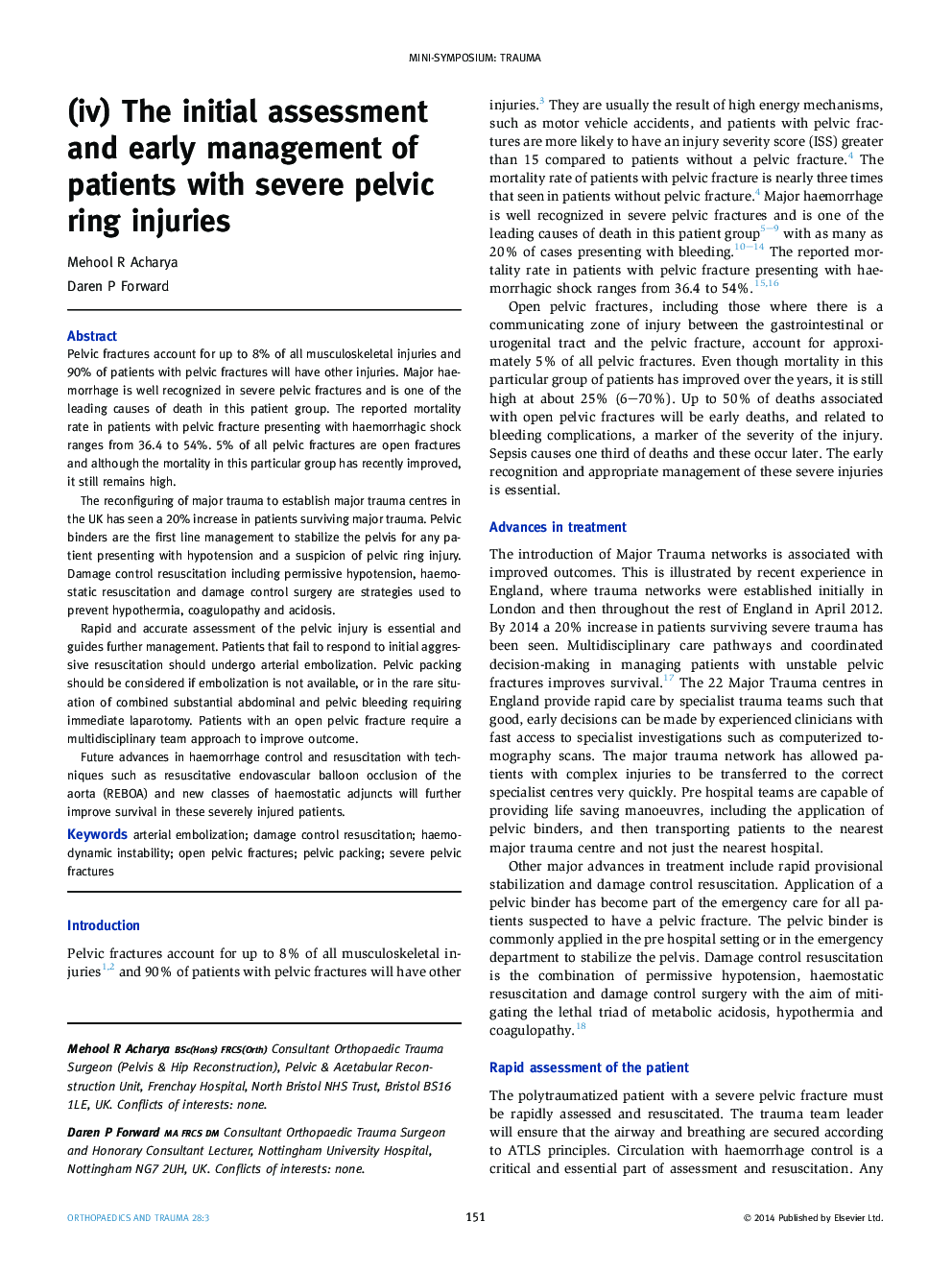| Article ID | Journal | Published Year | Pages | File Type |
|---|---|---|---|---|
| 4080293 | Orthopaedics and Trauma | 2014 | 8 Pages |
Pelvic fractures account for up to 8% of all musculoskeletal injuries and 90% of patients with pelvic fractures will have other injuries. Major haemorrhage is well recognized in severe pelvic fractures and is one of the leading causes of death in this patient group. The reported mortality rate in patients with pelvic fracture presenting with haemorrhagic shock ranges from 36.4 to 54%. 5% of all pelvic fractures are open fractures and although the mortality in this particular group has recently improved, it still remains high.The reconfiguring of major trauma to establish major trauma centres in the UK has seen a 20% increase in patients surviving major trauma. Pelvic binders are the first line management to stabilize the pelvis for any patient presenting with hypotension and a suspicion of pelvic ring injury. Damage control resuscitation including permissive hypotension, haemostatic resuscitation and damage control surgery are strategies used to prevent hypothermia, coagulopathy and acidosis.Rapid and accurate assessment of the pelvic injury is essential and guides further management. Patients that fail to respond to initial aggressive resuscitation should undergo arterial embolization. Pelvic packing should be considered if embolization is not available, or in the rare situation of combined substantial abdominal and pelvic bleeding requiring immediate laparotomy. Patients with an open pelvic fracture require a multidisciplinary team approach to improve outcome.Future advances in haemorrhage control and resuscitation with techniques such as resuscitative endovascular balloon occlusion of the aorta (REBOA) and new classes of haemostatic adjuncts will further improve survival in these severely injured patients.
